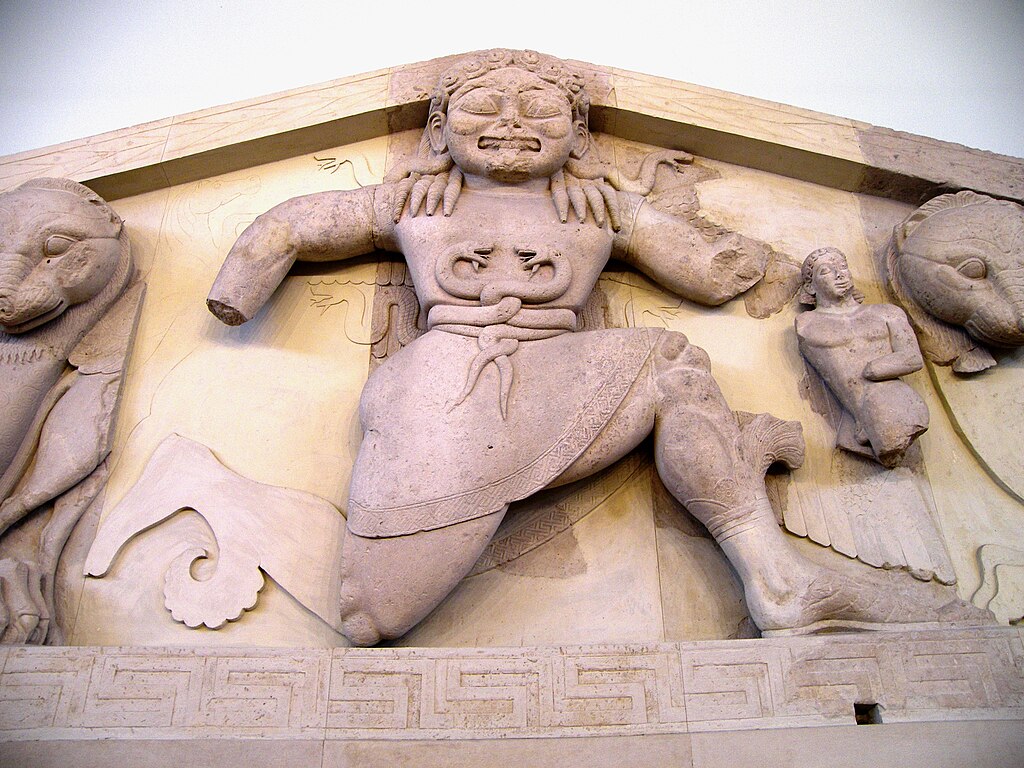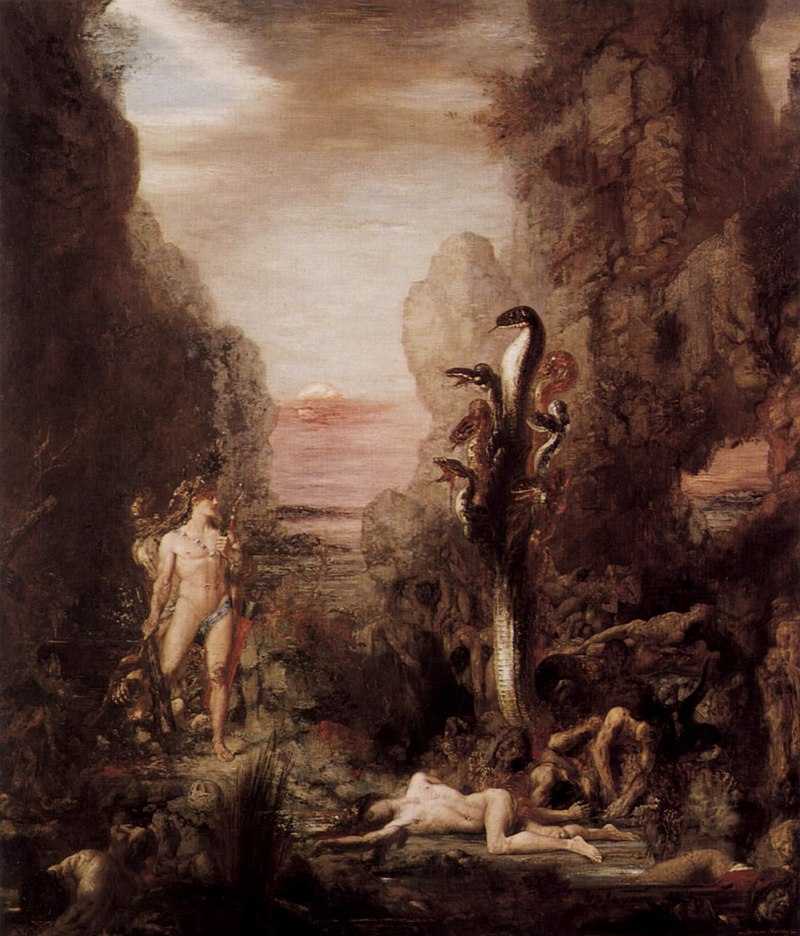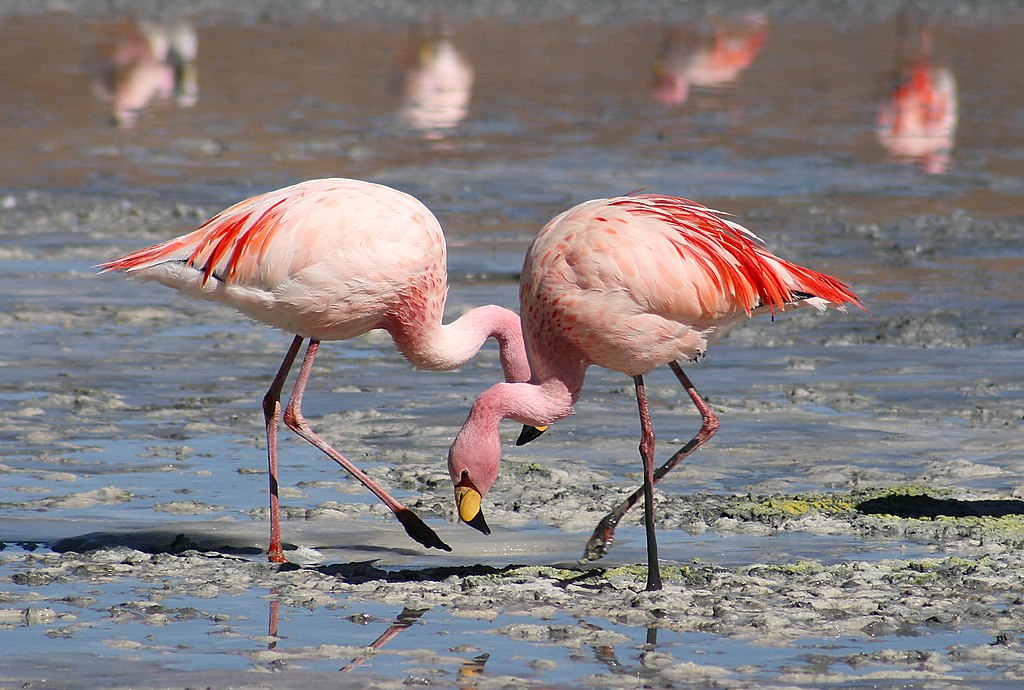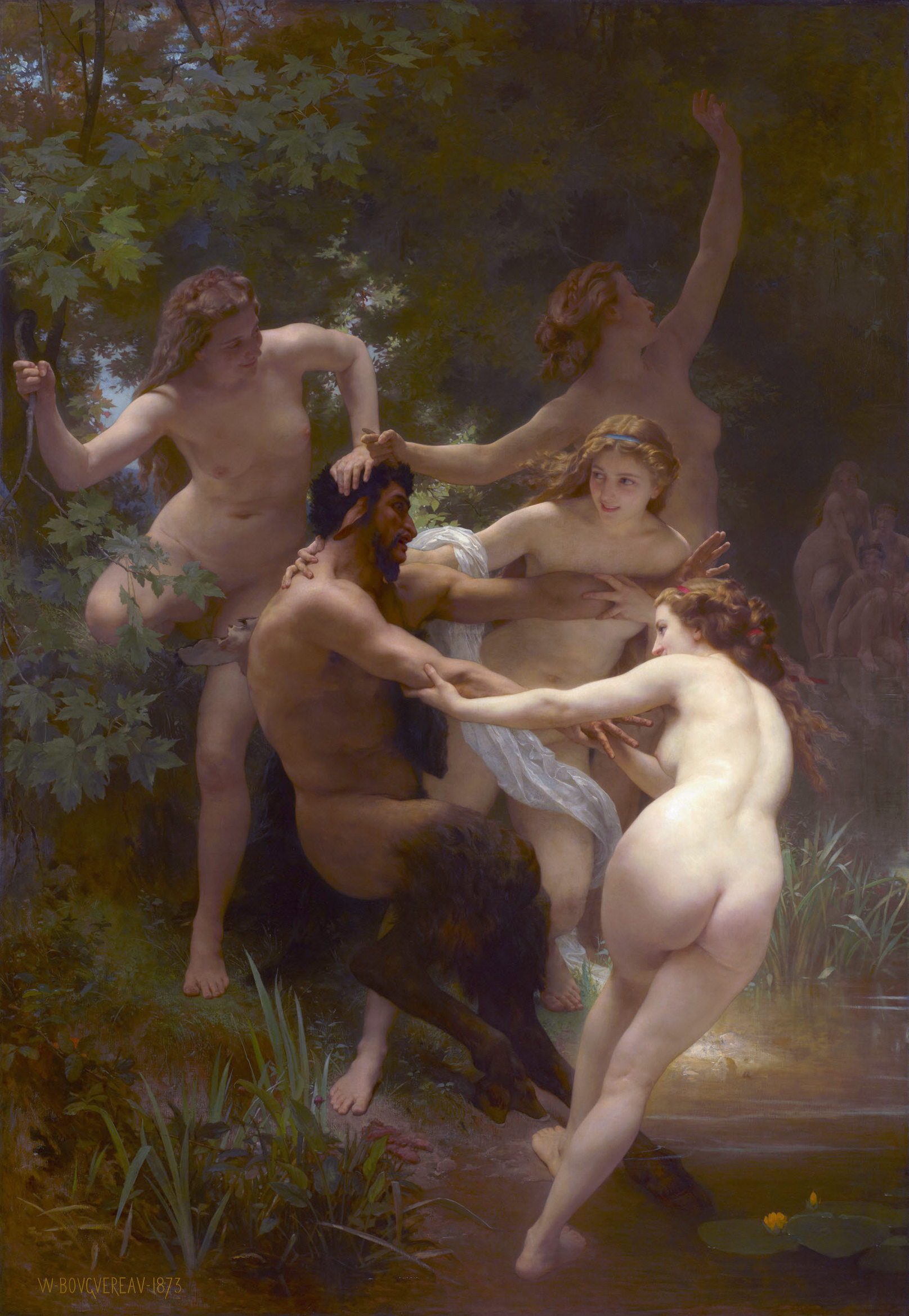Copyright 2016 by Gary L. Pullman
In
ancient times, much of the world was unknown to most of the peoples
who inhabited it. Travel was slow, arduous, and expensive.
Consequently, not many people traveled. Even those who did were able
to see only portions of the distant lands they visited. People were
also more gullible, in some ways, readily believing reports that,
today, would be considered incredible, defying scientific laws or
well-established theories.
Limits
on travel, however, were not the only causes of belief in
mythological and legendary creatures. Sometimes, remnants of
prehistoric animals; existing, but exotic animals; artwork; religious
totems; geographical features; military and political events; human
remains; mis-translations; chicanery; or genetic mutations may have
led ancient peoples to conclude strange creatures, often hybrids of
humans and animals, once existed and, indeed, might still live in
far-off lands or heavenly places.
Although
hypotheses about the origins of mythological monsters are mostly
educated guesses, they're rooted, for the most part, in history and
science, which makes them intriguing. They may even be true.
Here,
then, are 10 mythological creatures and their possible origins.
10
Blemmyae
Belief
in the headless Blemmyae apparently persisted into the Middle Ages.
The dubious 14th-century travelogue, The
Travels of John Mandeville,
mentions headless “folk,” placing their eyes in their shoulders,
rather than in their chests, and relocating them to Asia. Sir Walter
Raleigh also describes a race of headless men, calling them
Ewaipanoma. Raleigh's version of the Blemmyae makes their home in
Guiana, South America.
The accounts of Herotodus,
Strabo, Pliny the Elder, Mandeville, and Raleigh show the Bleemyae's
origins: A Nubian tribe, they were “fictionalized,” becoming
“acephalous (headless) monsters,” living first in Libya, then in
Nubia, next in Asia, and, finally, in Guiana.
9 Centaur
In Greek mythology, centaurs are
half-human, half-horse creatures. Most centaurs were of low
character, drank excessively, and were prone to violence. However,
the centaur Chiron was cultivated, wise, and kind.
8 Cyclops
One-eyed
giant cannibals, the Cyclopes made their home in Sicily. The most
famous among them, Polyphemus, appears in The
Odyssey,
eating several of the hero's crew before Odysseus blinds him and he
and the rest of his men escape.
It
appears that a prehistoric animal's fossil may account for the origin
of the Cyclopes of Greek mythology: “The tusk, several teeth, and
some bones of a Deinotheriumgiganteum,”
one of the biggest mammals ever to exist, were discovered “on the
Greek island Crete.” It is recognizable by the “large nasal
opening in the center of its skull,” which, some scientists
believe, the ancients may have mistaken for the single socket of the
one-eyed monster they called Cyclops.
7 Dragon
Typically, the fire-breathing
dragon is described or depicted as having the wings of a bat, the
body of a gigantic lizard, reptilian scales, and “a barbed tail.”
Sometimes, dragons were represented as having only one head, but,
other times, they were also described as having many. Unlike the
dragons of Middle Eastern and European folklore, the usually wingless
Chinese dragons were not evil, but symbolized the male yang principle
of the yin-yang, “the two complementary forces . . . of life.”
There are several possible
explanations for the origin of dragons: dinosaurs, Nile crocodiles,
goannas, whales, and an innate human fear of predators.
A stegosaurus fossil may have
suggested the dragon to ancient peoples. It is known that, in one
case, “Chang Qu, a Chinese historian from the 4th century B. C.,
mislabeled such a fossil in what is now Sichuan Province.” Such
fossils have attributes that could easily convey the image of a
gigantic, scaly beast: They “averaged 30 feet in length, were
typically 14 feet tall and were covered in armored plates and spikes
for defense.”
Another possible inspiration for
the dragon is the Nile crocodile, which grows to a length of 5.5
meters (18 feet) and can walk with its “trunk elevated off the
ground” in a “lumbering” gait.
In Australia, goannas, a species
of monitor lizard, might have given rise to the belief in dinosaurs.
Large predators, they have “razor-sharp teeth and claws” and may
“produce” infectious venom.
A fourth candidate for the
source of belief in dragons is the whale. Bones on beaches might have
been mistaken for skeletons of gigantic terrestrial predators.
A
final hypothesis, set forth in anthropologist David E. Jones' An
Instinct for Dinosaurs,
is that human beings' “innate fear of predators” may have led to
their creation of dragons.
6 Gorgon
In
Greek mythology, gorgons had snakes for hair, and their
fierce gaze could turn a person into stone. Their bodies, which were
armored in scales; their brass hands; and their fangs added to their
fierce appearance. Although some believed the gorgons to be bearded,
their so-called beards were actually “blood flowing under” their
heads.
One
explanation for the origin of the gorgons is that they are derived
from images of female monsters on Neolithic art objects, including
vases and shields. Some of the gorgons' “reptilian attributes”
may be “derived from the guardians closely associated with early
Greek religious concepts at the centers of oracles.” The guardians'
“skin was said to be made of impenetrable scales.”
Another possible origin of the gorgons is the monster Humbaba, who appears as
an adversary of the hero Gilgamesh in the ancient Babylonian epic poem named for him. Parallels between the earlier Assyrian Humbaba and the later Greek gorgon suggest that "the former have morphed into the Greek Medusa.” Like the gorgon depicted on Greek
masks, Humbaba was portrayed on Assyrian masks. In both cases, the masks “are never shown in profile and always full-frontal.” Both
Gilgamesh and Perseus decapitate their respective adversaries, and both put the heads of their enemies in leather bags. When Medusa was killed, the winged horse Pegasus sprang from her blood. In the Gilgamesh epic, there's a similar creature, the Bull of Heaven, a winged gryphon. Whereas Athena featured “a mask of Medusa on her shield,” Sicily, which had been a Greek island before it was part of Italy, “uses a mask of Medusa as its emblem and flag.” Medusa may have derived from Humbaba, but both were “based on the description of a lion.”
5 Griffin
Part
lion, part hawk, and part eagle, the griffin was added, probably from
earlier Middle East cultures, to the ancient Greek pantheon of gods
and monsters. Mandeville mentioned the beast in his spurious medieval
travelogue.
The imaginary animals had sharp teeth and often flew victims to a
great height “before dropping them to their deaths.”
Researcher Adrienne Mayor
attributes griffins' origin to dinosaur fossils. She believes “the
gold-guarding griffin” may be derived “from tales first told by
Scythian gold-miners, who, passing through the Gobi Desert at the
foot of the Altai Mountains, encountered the skeletons of
Protoceratops and other dinosaurs that littered the ground.” The
ancient Scythian' attempts to “reconstruct the appearance of these
prehistoric creatures” and to explain their existence could have
resulted in the legendary griffin.
4 Hydra
As one of his 12 labors, the
Greek demigod Heracles (in Roman mythology, Hercules) slew the
many-headed serpent named Hydra, a monster living in Argos, near a
Lerna swamp. In some accounts, the beast has 5 heads, in others as
many as 100. These apparent discrepancies are explained, perhaps, by
the monster's ability to grow two heads for every one that was cut
off. Only one head, though, was immortal. In fighting the Hydra,
Heracles enlisted the assistance of his friend and nephew Iolaus. As
Heracles cut off a head, Iolaus cauterized the wound with a torch so
another head could not grow back. After Heracles decapitated the
immortal head, he buried it under a boulder, before draining its body
of its poisonous blood.
Scholars explain the origin of
the hydra by suggesting that the monster was a personification of a
river delta. In Myth and Geology, Luigi Piccardi and W. Brube
Masse contend that the Hydra's many heads symbolize “the many water
sources feeding the large swamps near Lerna.” The battle between
Heracles and the Hydra, likewise, represents “the draining effort.”
The burial of the Hydra's head beneath a large rock may reflect the
conquest of Lerna by invading “Indo-European Greeks.” Afterward,
the invaders buried the “head” of the conquered land, the
destroyed Lernean Palace, “under an enormous funerary tumulus
(grave mound). The tumulus, the authors point out, “corresponds to
the huge mythological rock placed by Heracles above the head of the
[Hydra] beast.” There is still another parallel that suggests the
geographical and political origins of the Hydra myth: “Even the
position of the buried Palace, [sic] corresponds to the
location of the head of the Hydra, buried on the side of the road to
Elaeus.”
3 Phoenix
A symbol of rebirth, the
phoenix, which rises from the flames of its own funeral pyre, entered
Greek mythology through Egyptian and Arab lore. After living for 500
years, the “eagle-like bird with shining red, golden, and purple
plumes” builds itself a nest. The sun burns the nest, the phoenix
dying in the fire. From its ashes, a newborn phoenix arises and
returns to Arabia to live out its days before the cycle is repeated.
The
phoenix's “tale may have evolved from the Egyptian Benu, a sacred
bird, mentioned in the Book
of the Dead,
that is associated with the sun god Ra and looks like a heron in
hieroglyphics.” However, an actual bird may be behind the phoenix:
“In Egypt, a prehistoric flamingo may have inspired the tale,
because heat waves rose from the hot salt flats where it laid its
eggs, perhaps suggesting a nest of fire.”
2 Satyr
The Greek satyr (Roman faun) was
a fertility figure in ancient Greece. His Hellenistic counterpart was
the Roman faun. The satyr was half-man, half-goat, but the Roman
version was equipped with a horse's tail and ears. Both satyrs and
fauns were fond of wine, women, and song.
Emperor Constantine made a
pilgrimage from Constantinople (Istanbul) to Antioch to view a
“satyr.” Actually a man “extremely well preserved in salt,”
the statue-like remains weren't the first of their kind to have been
discovered in abandoned salt mines in the Middle East, and these
“salt men” might have been the origin of the mythological satyr.
Stanford
University's Adrienne Mayor, a folklorist and author of "The First Fossil Hunters: Paleontology in Greek and Roman Times
, contends “the head of the man preserved in salt since about 540-300 B.C. 'bears a striking resemblance to ancient Greek and Roman depictions of satyrs,'” showing a “similar hair and beard, a snub nose and [a] protruding jaw.”
AndrewMerrills, a Roman historian with London's University of Leicester, believes Mayor's hypothesis is an intriguing “maybe.” However, Tufts University's archaeologist Bruce Hitchner regards her view as plausible.
1 Unicorn
A
horse with a single, sharp, conical, sometimes spiraling, horn
growing from the center of its forehead, was depicted in ancient
Mesopotamian art and was featured in ancient Indian and Chinese
myths. The ancient Greek historian Ctesias (c. 400 BC) claimed the
creature's horn had medicinal properties that could provide
protection “from stomach trouble, epilepsy, and
poison.”
Several explanations have been
put forward for the unicorn's origin. One view is that the unicorn,
as Ctesias describes it, may derive from the hippopotamus.
A
second hypothesis suggests belief in the animal stems from an error
in Biblical translation. The Hebrew word, re'em,
translated as “unicorn” or as “rhinoceros,” probably means
“wild ox,” the term translators often now use.
The idea that unicorns really
existed might have received further credibility due to the fact that
rhinoceros horn or narwhal tusk, ground up and sold as an antidote to
poison, was said to be derived from unicorn horn.
Some who accepted the existence
of unicorns believe they evolved into the narwhal, “a member of the
porpoise and whale family,” which has “a single, twisty tooth.”
Yet
another possible explanation for unicorns presented itself with the
recent discovery, near Florence, Italy, of a deer with only one horn.
The horn is a product of genetic mutation, and the deer who possesses
it is probably not the first to have undergone such a variation. Deer
“with similar abnormalities could have been spotted throughout
history, and contributed to the persistent unicorn legend.”







.jpg/1920px-Basilosaurus_cetoides_(1).jpg)


.jpg/800px-Martin_Schongauer%2C_The_griffin_(15th_century).jpg)









No comments:
Post a Comment